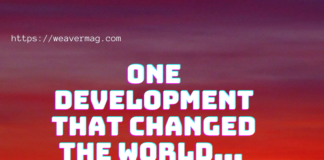Quad or the Quadrilateral security Dialouge is a strategic security dialogue between 4 countries, India, America, Japan and Australia.
The dialogue was initiated in 2007 by Japanese Prime Minister Shinzo Abe, with the support of Australian Prime Minister John Howard, Indian Prime Minister Manmohan Singh, and U.S. Vice President Dick Cheney. The dialogue was paralleled by joint military exercises.
The diplomatic and military arrangement was widely viewed as a response to increased Chinese economic and military power, and the Chinese government responded to the Quadrilateral dialogue by issuing formal diplomatic protests to its members, calling it “Asian NATO”.
During the 2017 QUAD Summits all four members led by Abe, Australian Prime Minister Malcolm Turnbull, Indian Prime Minister Narendra Modi, and US President Donald Trump agreed to revive the quadrilateral alliance in order to counter China militarily and diplomatically in the “Indo-Pacific” region, particularly in the South China Sea. Tensions between Quad members and China have led to fears of “a new Cold War” in the region.
Creation of the QUAD:-
In early 2007, Prime Minister Abe proposed the Quadrilateral Security Dialogue, under which India would join a formal multilateral dialogue with Japan, the United States and Australia.
The initiation of an American, Japanese, Australian and Indian defence arrangement, modelled on the concept of a Democratic Peace, was credited to Japanese Prime Minister Shinzo Abe. The Quadrilateral was supposed to establish an “Asian Arc of Democracy,” envisioned to ultimately include countries in Central Asia, Mongolia, the Korean Peninsula, and other countries in Southeast Asia: “virtually all the countries on China’s periphery, except for China itself.” This led some critics, such as former U.S. State Department official Morton Abramowitz, to call the project “an anti-Chinese move,” while others have called it a “democratic challenge” to the projected Chinese century, mounted by Asian powers in coordination with the United States. While China has traditionally favoured the Shanghai Cooperation Organisation, the Quadrilateral was viewed as an “Asian NATO;” Daniel Twining of the German Marshall Fund of the United States has written that the arrangement “could lead to military conflict,” or could instead “lay an enduring foundation for peace” if China becomes a democratic leader in Asia.
After some time the quad was passed, Restarting the Quad:-
In August 2017, Japan invited Australia, India and the US to hold a joint foreign ministers meeting during the ASEAN summit in November.
In November, American president-elect Donald Trump and Prime Minister Abe met and agreed to pursue what Japan calls a “Free and Open Indo-Pacific” strategy, originally a concept developed by US Secretary of State Hillary Clinton. The agreement was regarded as a response to China’s Belt and Road Initiative, and Chinese minister Geng Shuang responded by stating that “such multilateral initiatives should promote cooperation among countries concerned and not be turned into exclusionary frameworks.”
The visit coincided with a meeting by Japanese, Indian, Australian and American officials to continue military cooperation ahead of the ASEAN and East Asia Summits in November 2017. The meeting included discussion of China’s increased prominence in the South China Sea, and may have signalled U.S. president Trump’s interest in reviving a formal Quadrilateral.
Current day stats:-
Currently the Quad is acting up against China in all aspects.










